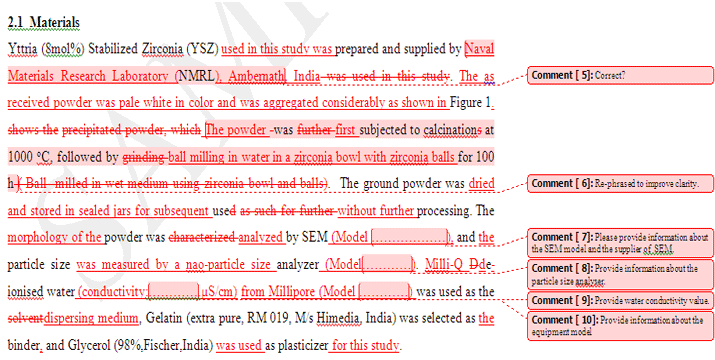

9 This study sourced 2,757 reviews of 913 submissions to the 6th International Conference on Learning Representations (ICLR 2018) this conference is dedicated to advancements in the deep learning branch of artificial intelligence. 9 In an effort to promote openness in scientific communication, OpenReview is open access and open source, and it uses a cloud-based web interface and database to store manuscripts and reviews. The reviews were accessed from, a website containing publicly available papers and reviews from many scientific conferences and journals (mainly in the computer/information science domain). The dataset used for this study comprised a large set of peer reviews of scientific papers from a popular computer science conference. This article describes a study of the relationship between copyediting comments by reviewers and the eventual outcome of submissions under peer review. In the case of peer review, reviewers’ perceptions of journal and conference submissions may be negatively affected by a lack of thorough copyediting or, their perceptions may be elevated if careful copyediting has been performed. 4,5 Overall, Wates and Campbell 4 assessed that copyediting was an important function and it yielded greater article accuracy and integrity. They found that 42.7% (n = 47) of the changes were related to incorrect or missing references 34.5% (n = 38) were typographical, grammatical, or stylistic 13.6% (n = 15) regarded missing data 5.5% (n = 6) were semantic and 3.6% (n = 4) aligned the articles with journal-specific conventions. 2,3 Wates and Campbell 4 examined the copyediting function using author versus publisher versions of articles and tracked the changes that occurred between the initial and final versions. Copyedited articles were rated higher in terms of impressions of professionalism, organization, writing, and value. Vultee 2 studied how editing may affect audience perception of news articles and found that editing had a significant positive effect.


Some previous studies have analyzed the impact of copyediting on articles and papers. Finally, a copy editor may review citations and cross-references and also fact-check when appropriate. The mechanical/proofreading aspect of copyediting comprises the review of punctuation, spelling, and labeling, and it may include the correction of typographical errors. A copy editor may also be responsible for ensuring proper grammar and usage-this includes (and is not limited to) establishing consistency in terminology and abbreviations, optimizing word choice, and reducing ambiguity.
#Editing scientific manuscripts free
What is the purpose of the copyediting process? The Society for Editors and Proofreaders states “the aim of copy-editing is to ensure that whatever appears in public is accurate, easy to follow, fit for purpose and free of error, omission, inconsistency and repetition.” 1 Among the various types of copyediting is substantive, or content, copyediting whereby a copy editor is concerned with the overall structure, organization, and presentation of the ideas in a document. Various scholarly journals also employ copy editors to review and edit articles prior to publication in this case, copyediting takes place after peer review has been completed and an acceptance decision has been rendered. Alternately, some researchers will copyedit their papers themselves.

Thus, copy editors are sometimes hired to refine a manuscript prior to its submission for peer review. Not all researchers are gifted in writing as well as their fields of expertise. I also sought to determine whether the frequency of positive, neutral/unknown, or negative copyediting terminology was correlated with submission outcome (reject and different types of accept). To discern the value of copyediting in relation to the review process, I examined peer reviews of manuscripts submitted to a large scholarly conference and surveyed the frequency of terms or phrases in reviewer comments that were associated with copyediting (e.g., “poorly written,” “wordy,” “typo”). The relationship between copyediting and the submission outcome (i.e., acceptance to a journal or conference) is not well understood. It can be performed before a manuscript is submitted for peer review or afterwards. Copyediting is a fundamental part of the publication process.


 0 kommentar(er)
0 kommentar(er)
